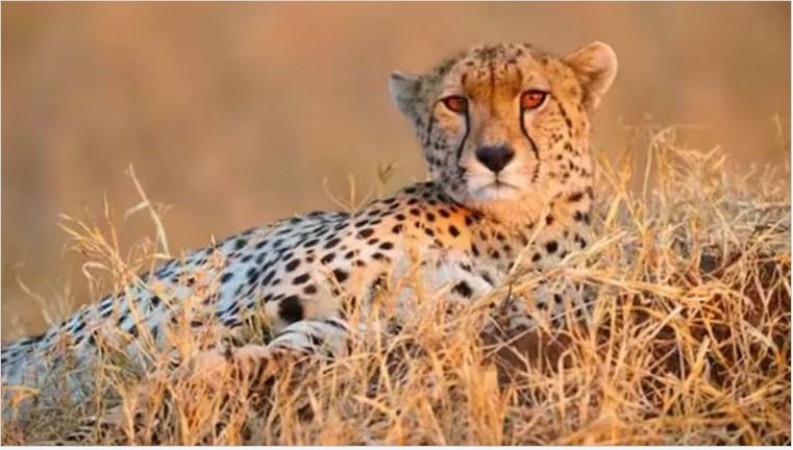
Madhya Pradesh: Another cheetah brought from South Africa has died in Madhya Pradesh's Kuno National Park (KNO). Forest official said. Female cheetah named "Daksha" died in MP's Kuno National Park; this is the third death in about 40 days. The last three months have seen three cheetah deaths in Kuno. The first cheetah was brought from Namibia, and the second one was brought from South Africa. It is believed that disease caused both cheetahs to die.
Earlier Late in January, Sasha, a six-year-old girl from Namibia, started feeling unwell. Her blood test findings shows that she had chronic renal insufficiency. The veterinary staff at KNP successfully stabilised her, but she died in March. The initial diagnosis was supported by a post-mortem. In many other captive felid species as well as in captive cheetahs, chronic renal failure is a common issue. Sasha was raised in captivity at CCF for a significant chunk of her life despite being born in the wild in Namibia. Although the underlying causes of felid renal disease are unknown, the ailment often advances slowly and takes months or even years to show clinical symptoms. Since the illness is not contagious, animals cannot contract it from one another. Therefore, none of the other cheetahs involved in the research are at risk. There are currently no effective or morally acceptable treatment options, and the prognosis for the ailment is quite bleak. As observed in Sasha's case, symptomatic treatment for the disease only results in transient improvement.
On April 23, a little over a week after he was transferred from his quarantine camp to a considerably larger acclimatisation camp, Uday, a man of unknown age from South Africa, began experiencing acute neuromuscular symptoms. He was observed to be unsteadily stumbling around and unable to lift his head during the morning surveillance. The KNP veterinary staff put him to sleep and administered symptomatic therapy. To further understand his condition, blood and other samples were taken and sent to the lab. Sadly, he died that same day. For a comprehensive post-mortem, more wildlife doctors and veterinary pathologists were called in. His death was most likely caused by terminal cardio-pulmonary failure, according to the initial evaluation. Heart and lung failure are frequent in the last stages of many diseases, but they don't reveal much about the underlying source of the issue.
It also does not explain the initial neuromuscular symptoms. With the exception of a small, possible hemorrhage-related area in his brain, the remainder of his organ tissues seemed to be pretty normal. There were no additional indications of infection or damage. For analysis, several tissue samples were collected. His very normal blood results and normal white blood cell count are important indicators that he was free of any infectious diseases that would have put the other animals at risk. Before any inferences are made, the histology and toxicological studies still need to be completed. No such signs have been observed in any of the other cheetahs, who have being constantly watched. They are all acting normally, hunting for themselves, and seem to be in wonderful health.
On September 17, 2017, the day before his 72nd birthday, Prime Minister Narendra Modi released the first group of eight spotted cats from Namibia into a quarantine cage in Kuno in Madhya Pradesh as part of the ambitious Cheetah reintroduction effort. The group consisted of five females and three males.